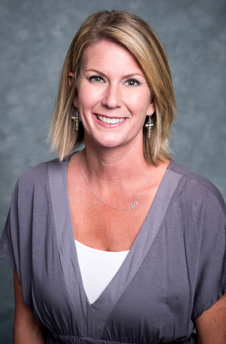Since 2014, University of Alabama at Birmingham School of Education Associate Professor Melanie Shores, Ph.D., (Department of Human Studies) and Associate Professor Tommy Smith, Ed.D., (Department of Curriculum and Instruction) have been co-executive directors of the School Science and Mathematics Association (SSMA).
The international organization, in existence since 1901, promotes research, scholarship, and best practices for integrating and enhancing school science, technology, engineering and mathematics (STEM) curriculum. As the SSMA prepares for its annual conference in October, here’s what Shores has to say:

How long have you been a member of SSMA?
Shores: Since 2005.
What is the aim of SSMA?
Shores: SSMA focuses on promoting research-based innovations related to K-16 teacher preparation and continued professional enhancement in science, mathematics, and STEM. We’re working to build and sustain a community of teachers, researchers, scientists, and mathematicians. We want to advance knowledge through research in STEM education and its integration into the classroom. We’re also working to influence policies in STEM education at the local, state, and national levels.
Tell us about the SSMA’s membership.
Shores: Our target audiences include higher education faculty members, K-16 school leaders, and K-16 classroom teachers. We also have retired teachers and lifetime members. Some of our members reside in the Bahamas, Canada, Germany, Japan, Israel, Turkey, and Saudi Arabia. We also have 58 student members.
What are some issues of concern for SSMA members?
Shores: I think one issue of concern is the low number of K-12 students who want to go into the STEM fields, especially among underrepresented populations; How do we attract them? How do we retain them?
We’re also concerned about STEM teachers in the United States. “Yes, we have a major shortfall of teachers, but even more so, we have a lack of respect for the profession.”
The lack of respect spans all teachers, but it’s especially prevalent in mathematics and science. We’re seeing science being continually downgraded and cut out of the classroom whenever possible. With mathematics, students’ and their parents’ lack of identity as quantitatively literate citizens and their negative attitudes toward mathematics is also a huge barrier. It’s more of a problem for girls in middle school, but it affects both genders. Therefore, as teacher educators, we’re not only thinking about the growing number of STEM fields that we need to help populate, but we must also learn to be more positive promoters of our profession and help retain our current teachers who are getting burned out on extra testing, lack of autonomy in the classroom, etc.
You and Dr. Smith also oversee the School Science and Mathematics (SSM) Journal. Tell us more about the publication.
Shores: The SSM Journal is an international publication that we produce monthly, October through May. In the journal, we highlight research on issues, concerns, and lessons within and between the disciplines of science and mathematics in the classroom.
What have been some of the hot topics discussed in the journal recently?
Shores: The emphasis on ways to better integrate STEM into the regular classroom setting, gender gap trends on mathematics exams, and geometric knowledge among middle school students are very hot topics these days. These are the top three most downloaded articles in the journal.
The SSMA will hold its annual conference Oct. 20-22. Are you going to be a presenter?
Shores: Yes. I’m making two presentations this year. One is on developing a standards-based vertical curriculum alignment across undergraduate and graduate statistics. The other is on how we can rethink next-generation standards. I think one way of doing that is by finding ways to infuse electrical engineering practices into a school curriculum. By doing so, students are introduced to the “E” in STEM early on and are more aware of their options and/or path for success in STEM careers.